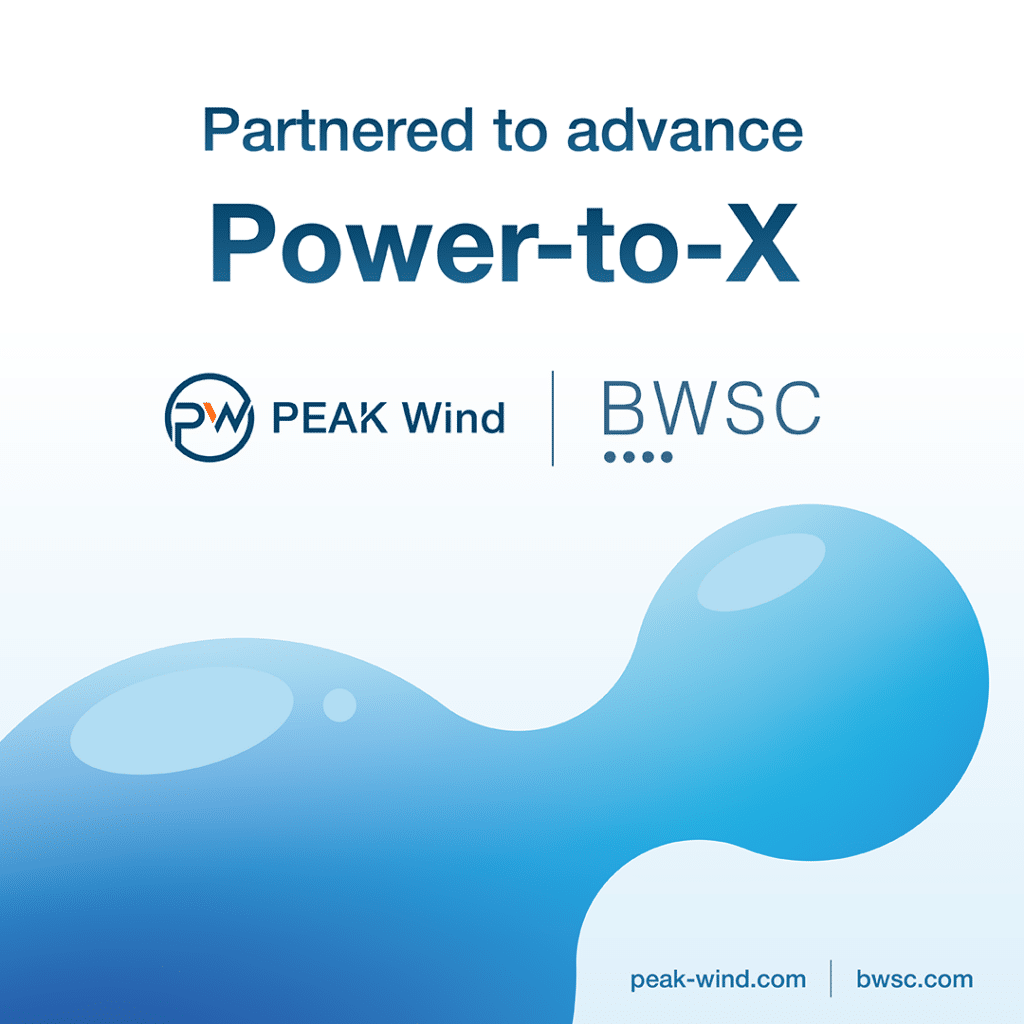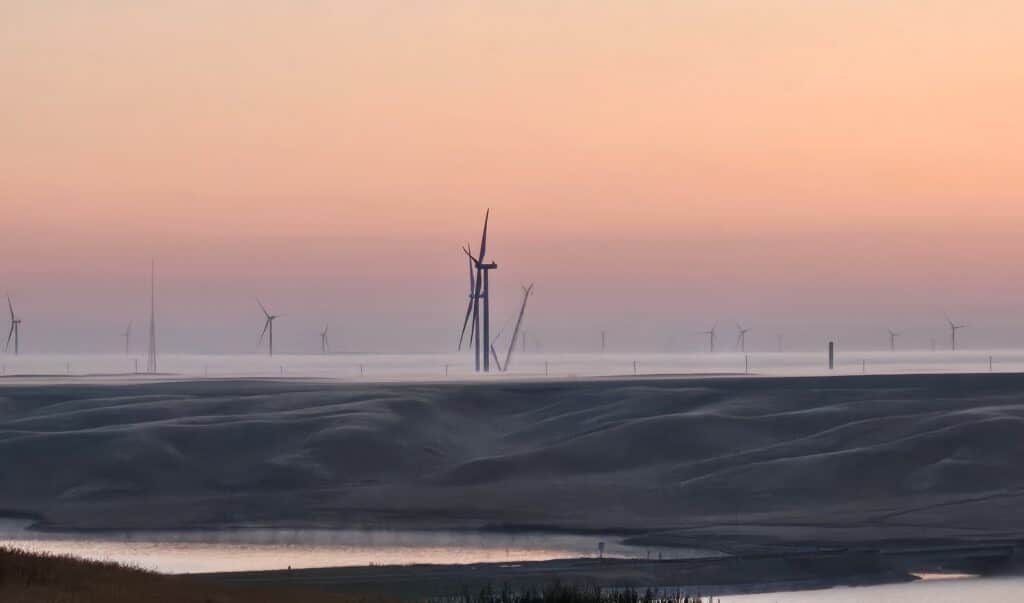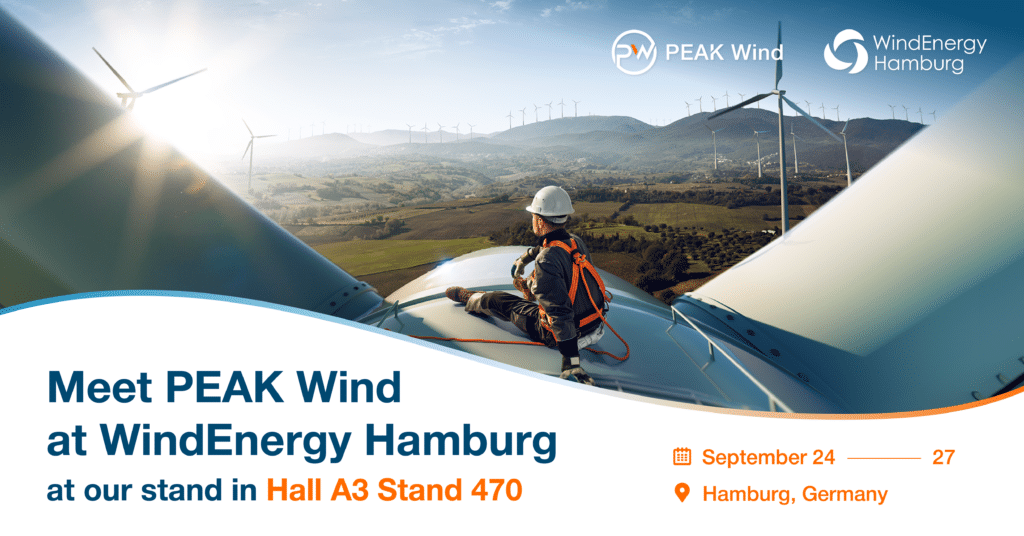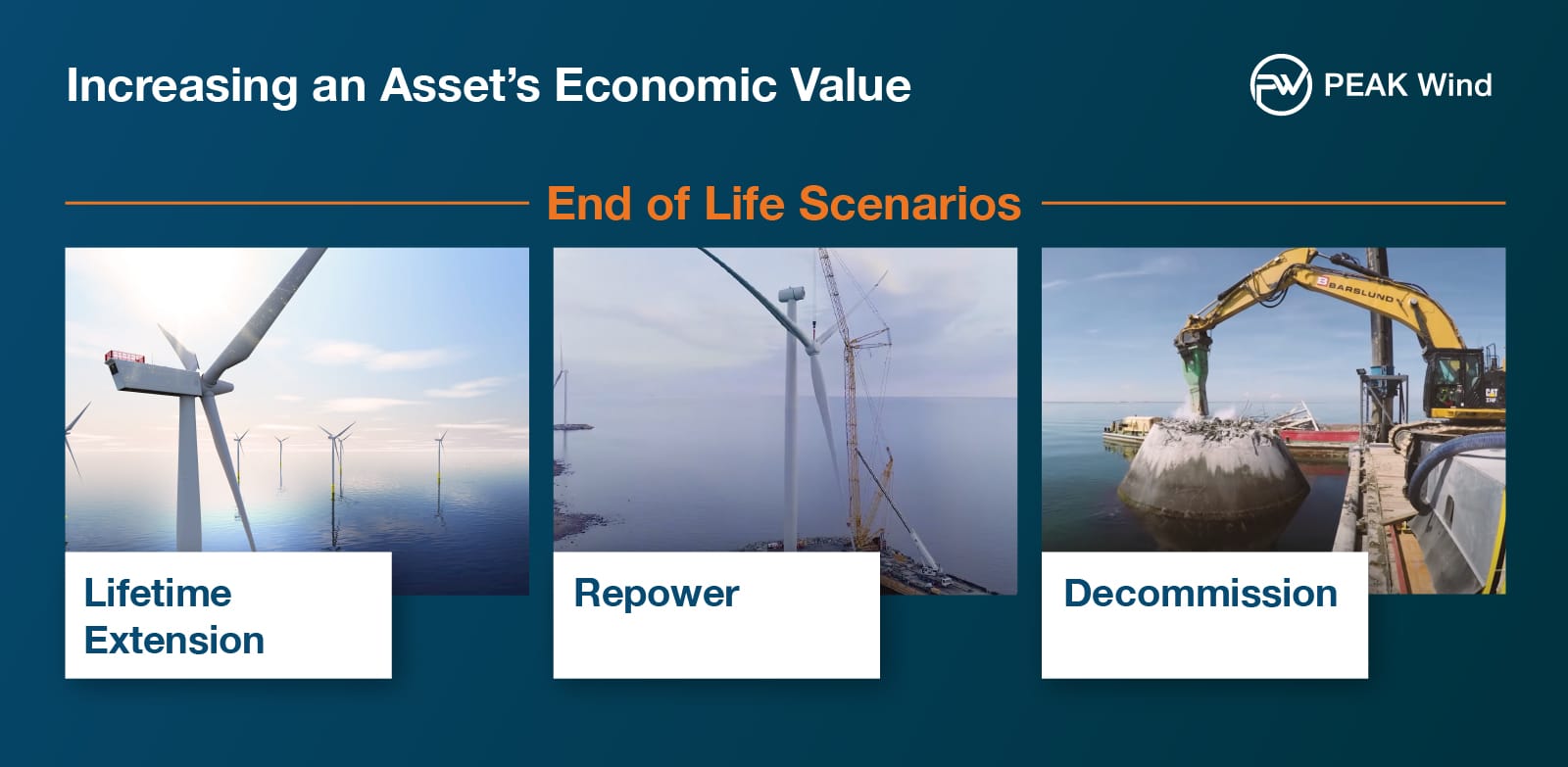
However, it is never too late to create an end-of-life strategy. Regardless of an asset’s operational stage, milestones need to be created to ensure end-of-life scenarios are continuously updated such that timelines do not significantly shift away from those initially anticipated due to unforeseen obstacles.
Why read this article?
- To learn more about end-of-life options and gain a glimpse into industry lifetime expectation and improved economic trends.
- Understand that the value of an asset can increase if an end-of-life strategy is formed at the early project stage and is revisited throughout lifetime.
- Recognize the importance of identifying and understanding showstoppers, necessary measures, and considerations for an end-of-life scenario.
Choosing the optimal End-of-Life scenario
A growing number of wind turbines today have either reached or are reaching the end of their planned lives. Owners need to make informed decisions for an end-of-life strategy, whether optimizing operations and maintenance and/or extending lifetime, repowering, or decommissioning. Lifetime is discussed herein, where the differentiators are as follows:
- Design Lifetime:The design lifetime is the period of time used for the strength verification during the design process as per international industry standard, IEC 61400. A turbine must be designed for a minimum of 20 years under the specified class conditions.
- Operating Lifetime:The operating lifetime is the time between commissioning and decommissioning of a wind farm.
- Useful Lifetime: Useful lifetime is the period of time a wind farm may continue to operate at an acceptable level of reliability. Expected costs and revenue are also assessed for acceptable economic performance within the scenario.

The decision to carry out an end-of-life scenario involves evaluating the following end-of-life options:
- Lifetime Extension:When an asset is operated beyond its planned and designed life, this is called extended life. A lifetime extension strategy may require some components to be upgraded or new technologies to be installed; however the overall layout of the wind farm remains the same (e.g., hub height, size).
- Repowering:An asset’s operation could also be continued though partial or full repowering. Partial repowering is where foundations remain the same with some major components upgraded, such as a turbine’s blades. A full repowering is complete dismantling and replacement of a wind turbine including the existing tower and foundation.
- Decommissioning:When operation is terminated entirely and the site is, to the furthest extent possible, restored and disturbed land revegetated to pre-construction conditions, this is referred to as decommissioned.
Key considerations and showstoppers need to be accounted for when determining an end-of-life strategy. The optimal solution entails a holistic approach that addresses a multitude of factors.
Business case evaluations, inclusive of revenue and cost outlook, need to be conducted when considering an end-of-life approach. A key question to ask when setting a useful lifetime: will the expected revenue be higher than the operating cost?

Increase in useful lifetime expectations: What lifetime should I put in my business case?
Market trends and operational track histories have demonstrated an increase in useful lifetime expectations recently for renewable assets as the wind industry has grown and matured. Onshore wind turbines are currently operating beyond their designed life, with benchmarks showing a recent increase in expected useful life for both onshore and offshore assets. Prolonged useful lifetimes of wind farms are industry-wide driven by business case optimizations derived from such.
Project investors, developers, or owners need not equate turbine certification design life with an asset’s useful, economic, or depreciable life. Subject to the financial situation and strategy, assets may end up being in operation longer than what they were planned and designed for. The approach for end-of-life involves an investor or developer’s risk appetite and desire to capture the value and economics of a project beyond its initial expectation. Setting an expected life, as portrayed in Figure 1, is dependent on a multitude of considerations.
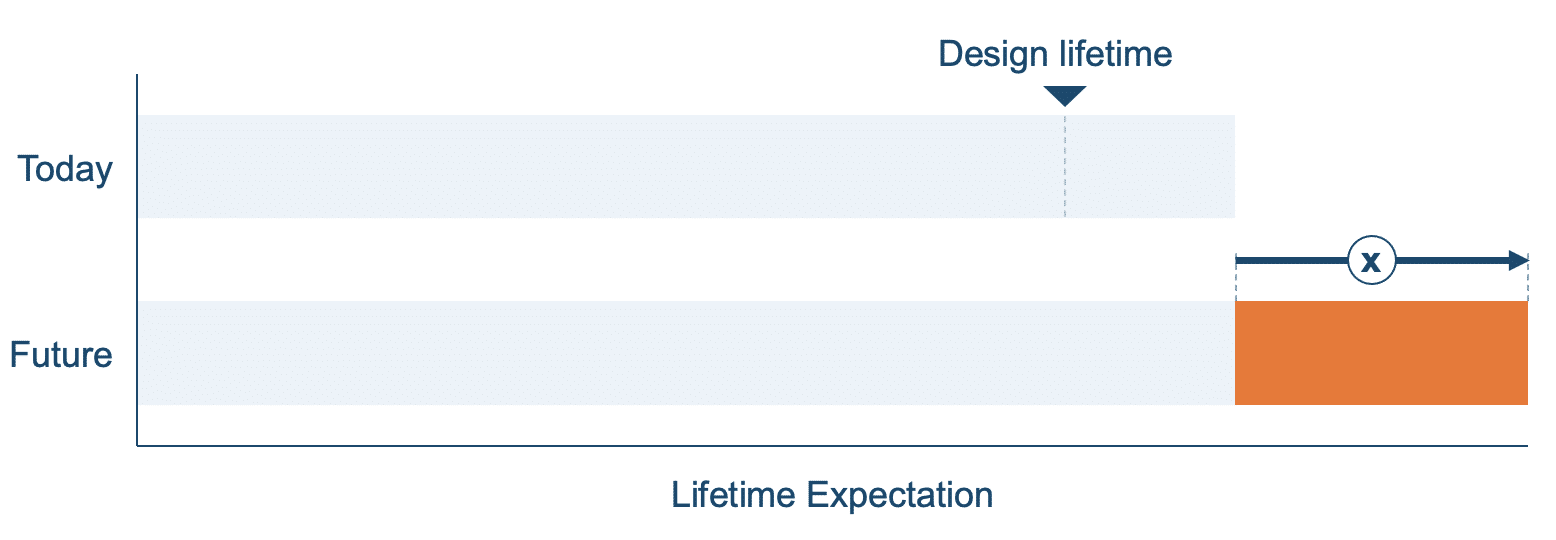
Figure 1. Setting a fact-based useful lifetime expectation
Lifetime extension programs are being offered from major OEMs and authorities have acknowledged lifetime extension and put procedures in place for prolonging a turbine’s life. The type of assessment that needs to be conducted towards end of planned life is dependent on the available reporting, documentation, and data. This assessment ensures the probability of failure remains at an acceptable level, considering the failure modes of components and maintenance history. Re-certification and extensive calculations are not always required. Having the right information is key to profitable wind farm operation. This information is also used to determine the possibility of extended life and to set a logical useful life for an asset initially and to revisit throughout operation.
Figure 2 demonstrates a positive influence on levelized cost of energy (LCOE), through increasing the life of a wind farm, from industry data through the Lawrence Berkeley National Laboratory. The benefits are slightly overstated where performance decrease over time due to aging components and OPEX increases with failure profiles are not factored, however with CAPEX spread over many years and comparable energy output, lower LCOE is strongly suggestive.
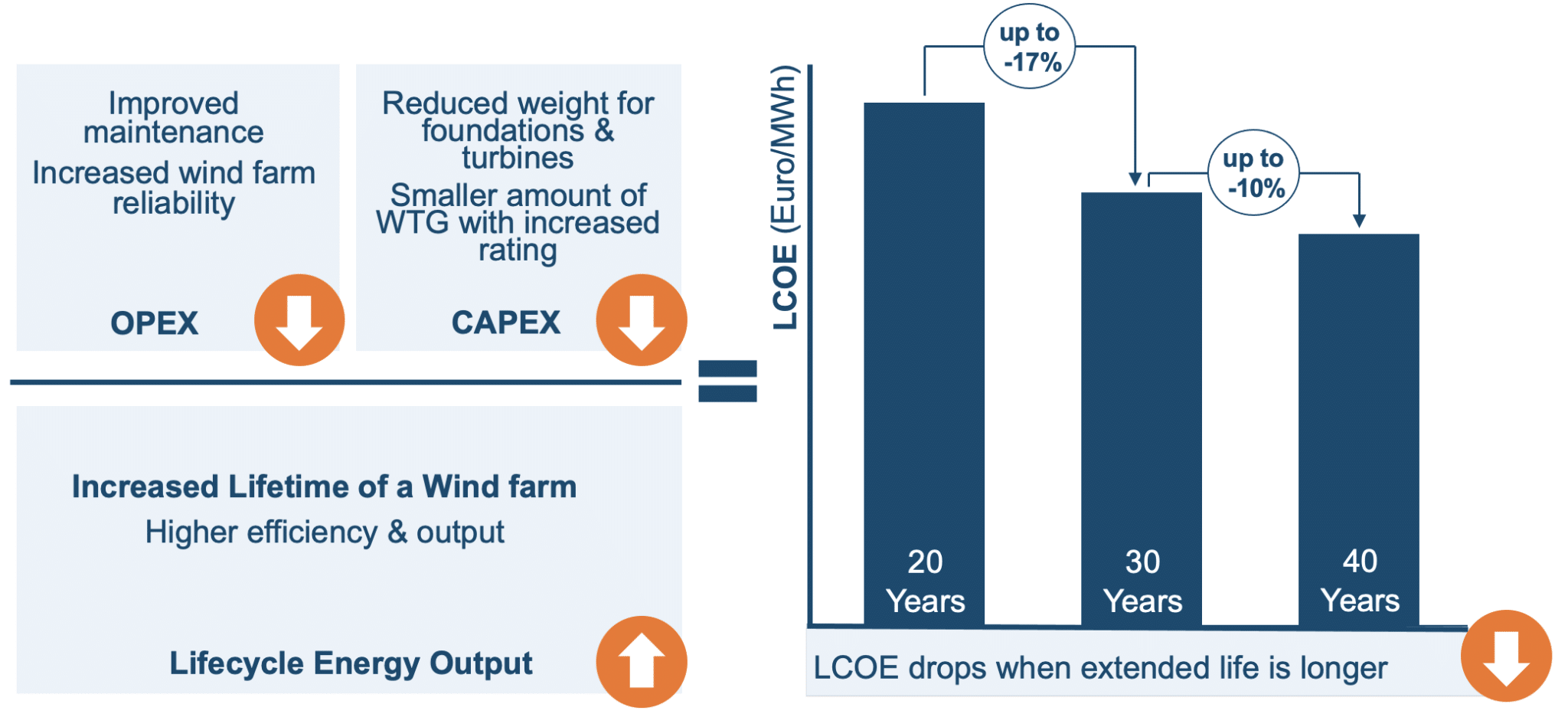
Data credit: Lawrence Berkeley National Laboratory
Figure 2. Extended lifetimes demonstrate a positive influence on LCOE
Project economics are generally improved with an extended life scenario. Elements such as Power Purchase Agreements (PPA) may factor into increased life expectations with the demand to demonstrate some post-PPA value from an overall investment return perspective. The type of offtake agreement and contractual terms need to be evaluated coupled with the Operation and Maintenance (O&M) strategy. O&M and refurbish expectations need to be accounted for with overall Operational Expenditure (OPEX) considered. OPEX levels are driven by increased direct O&M cost such as overhauls, materials, logistics and personnel due to expected higher failure rates during extended life. Technological improvements in inspection methods and increased knowledge towards ‘pain points’ allows for improved O&M management throughout an asset’s lifetime. Owners need to carefully consider whether corrective or preventive maintenance activities are conducted considering the cost-benefit in the light of the remaining useful asset lifetime. Modeling of operational strategies throughout life, enables clarify on cost for decisions to be taken over the optimal lifetime operating strategy.
Wind turbines, foundations, and surrounding assets must have sufficient structural life remaining to ensure an adequate level of safety is reached when extending operation of a wind farm beyond the original design lifetime. Environmental conditions such as wind and wave regimes, civil and electrical balance of plant, along with structural analysis including component wear and tear and estimated failure rates all needs to be factored into useful life. Longer lifespans have been seen/ granted for assets designed with a high IEC class placed at non turbulent sites. There is a higher likelihood that a low turbulence intensity site further enables extended useful life compared to a site with a high turbulence intensity. Advanced modeling capability through technological advances have enabled improved designs coupled with lessons learned captured from early industry years. Improved control strategies today have further allowed for loads to be dampened and features on the market enabling a decrease in consumed life over time. This coupled with a solid asset integrity program including condition monitoring and maintenance is key for enabling extended life.
Mapping of showstoppers and key considerations is essential to identify any potential obstacles
To ensure that unexpected roadblocks do not appear, thus altering an end-of-life strategy, it is critical to identify key considerations for an end-of-life scenario. These considerations should include necessary measures that need to be accounted for along with highlighting showstoppers which could be a limiting factor thus creating an obstacle and altering an extended life plan. A showstopper is an unforeseen issue that would prevent an end-of-life strategy. An example is legislation or regulatory framework restricting an extension of a current land or seabed lease.
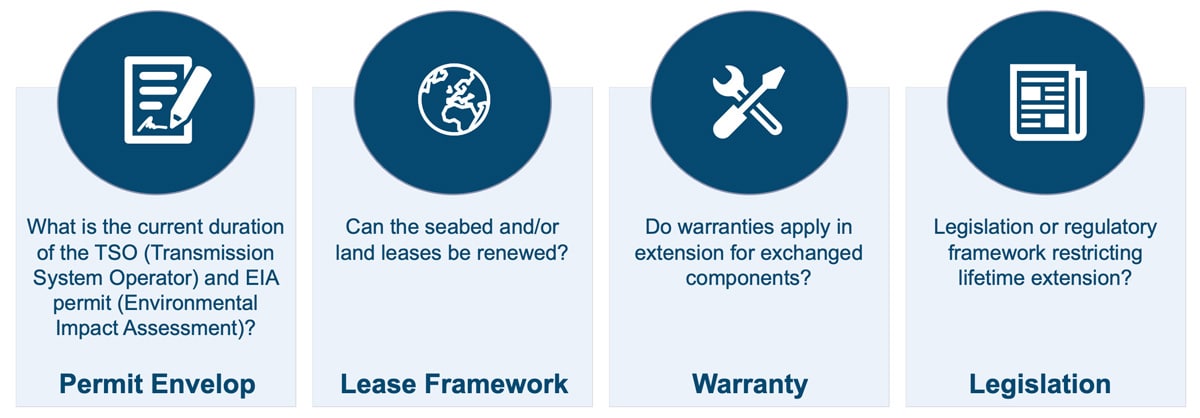
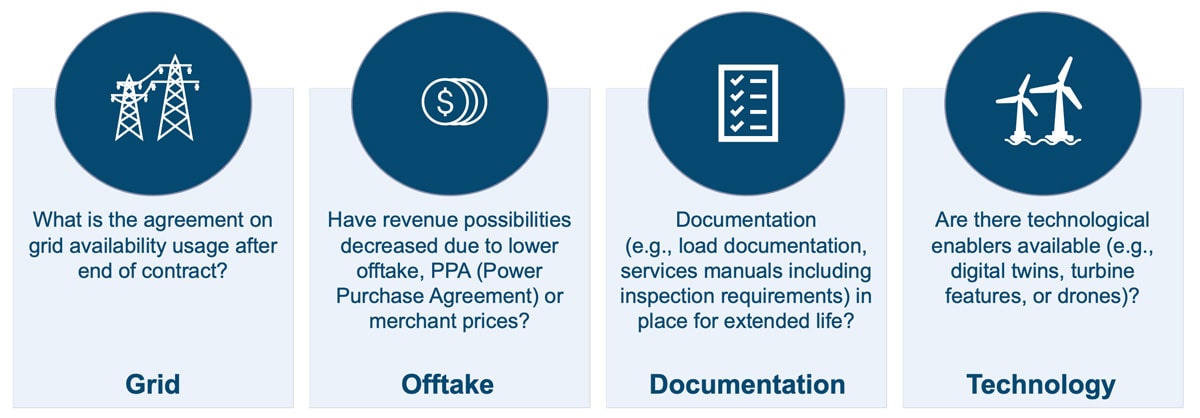
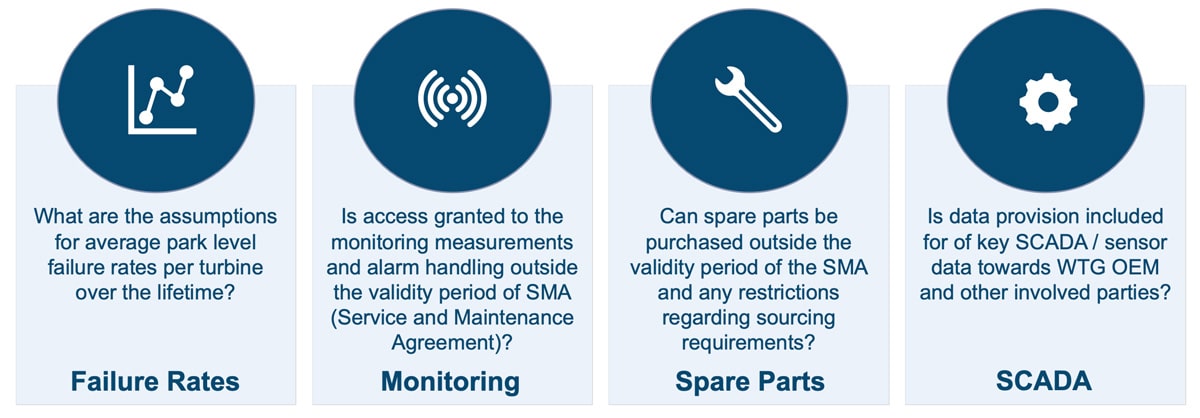
Figure 3. Example of showstoppers and considerations
By running through a checklist of items from the beginning and revisiting throughout the project lifetime to capture changes (e.g., change in legislation or major breakdown occurrences) and add relevant items, sound fact-based decisions can be made. Timelines can be better understood, along with profitable opportunities revealed through business case optimizations. Examples of considerations, including showstoppers, have been highlighted within Figure 3. It should be noted that this is not the exhaustive list of items, only examples of factors which could impact the lifetime of a project.
It is key to ensure that all showstoppers have been evaluated holistically within the operational, technical, commercial, financial, and regulatory categories for a solid end-of-life strategy. Incorporating an end-of-life asset management review process enables realization of potential extended life opportunities.
Creating a thorough End-of-Life roadmap
An end-of-life strategy can be created at any time of a project’s life, however through forming a plan at the beginning of life (before financial close), key enablers for extended life can be ensured such as contractually guaranteeing access is granted to monitoring measurements and alarms, site suitability conditions, or agreeing on a longer land lease date for facilities.

Figure 4. Exemplary schematic of key milestones to revisit for an end-of-life strategy
An end-of life decision framework and roadmap should be revisited throughout the lifetime of a project to ensure any changes or adjustments are made within areas such as legislation, O&M, spare parts, and technology. Figure 4 portrays a high-level schematic timeline of exemplary milestones that have been created for an end-of-life strategy which should be tailored per project and/or organizational parameters to make sure certain key stakeholders are involved.
Through creating milestones that establish updates to key showstoppers and considerations, end-of-life opportunities can be adjusted accordingly with timelines better ensured. Lead times for key areas are consequently also captured with the feasibility of extended life opportunities transparent. A framework of guidance is thus developed to ensure decisions are made on a sound basis for an end-of-life scenario.
The above article focused on wind turbines, however depending on the market conditions and project specific viability, the useful life of a utility solar farm can also be extended through an end-of-life strategy. For PV utility assets it is important to evaluate economic lifetime vs. technical lifetime, as it may not make sense to run as long as technically feasible.
Keep in mind…
- To ensure that unexpected roadblocks do not appear, thus altering an end-of-life strategy, it is necessary to identify key considerations for an end-of-life scenario.
- An end-of-life strategy should be revisited through an asset’s life to ensure showstoppers and necessary measures are adjusted accordantly.
- A holistic understanding of operational, technical, commercial, financial, and regulatory categories should be formed for a solid end-of-life strategy.
Want to learn more about lifetime extension?
Just reach out to us, we are always happy to answer your questions and get into discussions on end-of-life topics both strategic, financial, and technical for onshore wind, offshore wind, and/or solar assets.
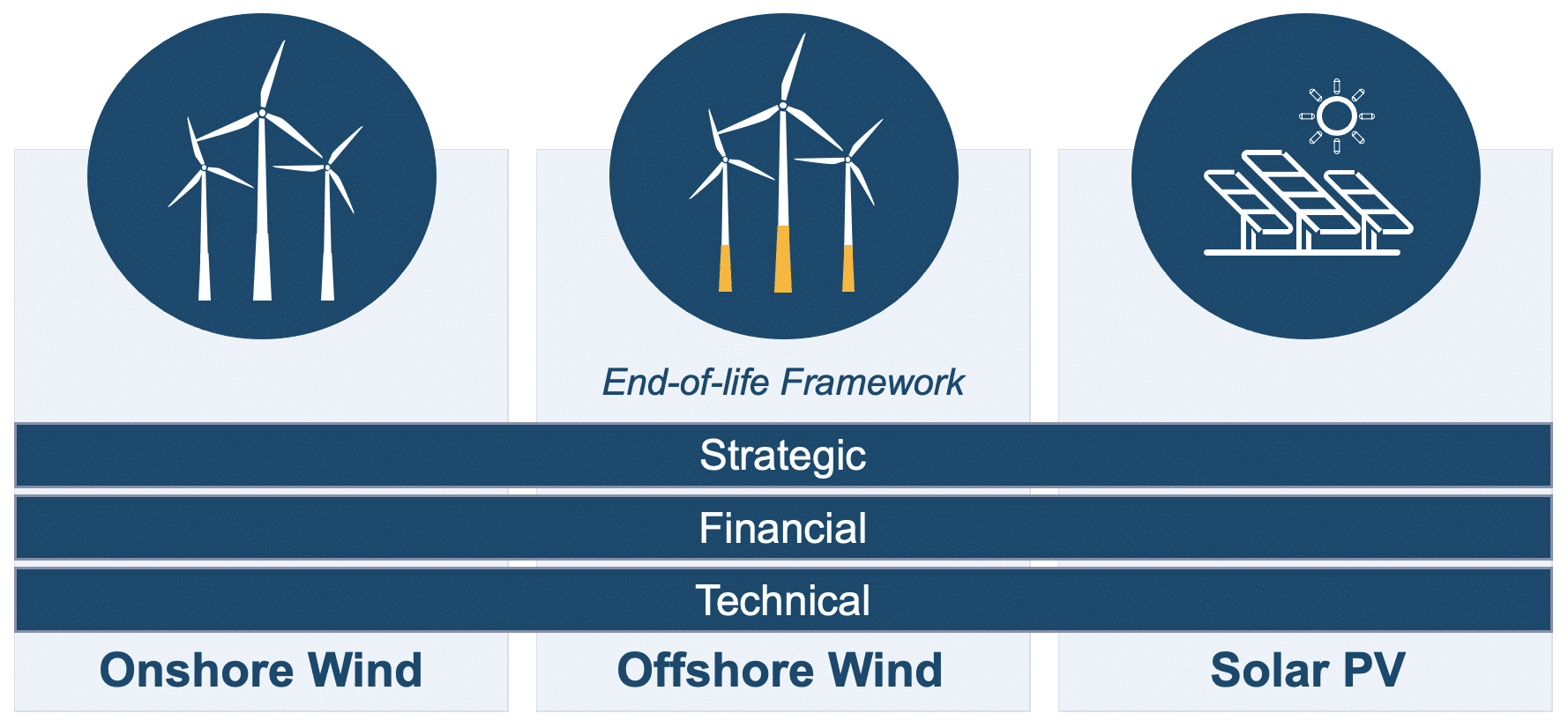
Annika Mathiasson | Lead Consultant & Deputy Country Director US | Get in touch |
Lene Hellstern | Director of Engineering | Get in touch |

